Chicken Tikka Masala: High Temps for Flavor
Authenticity is not actually the greatest good in cooking. In fact, it is inauthenticity that breeds innovation and variation in the culinary landscape, and it has done great things. For instance: almost none of the “Chinese” food that what we eat in America is authentically Chinese. The chimichanga is not authentically Mexican, nor is the combination of sauerkraut and bratwurst eaten by actual Germans. And that’s ok! Those dishes have a history and story and tradition of their own that is worthy of respect and admiration.
Perhaps chief among the list of inauthentic dishes that have taken on their own life is the nominally Indian dish, chicken tikka masala. In all likelihood invented in a restaurant in London, chicken tikka masala is one of the most famous and best-loved curries in the world. And why shouldn’t it be? It has a rich, tangy, creamy sauce and spiced, charbroiled chunks of tender chicken. It’s perfect just the way it is. Today we bring you a version that you can cook using your grill or even better, if you have one, your Kamado-style ceramic cooker. With the high temps we’ll be operating at, we’ll be spot-checking our chicken regularly to make sure it’s properly temped and doesn’t shoot past our target temperatures. So grab your Thermapen® and let’s get grilling, even if you have to clear the last bit of snow off your grill to do it.
What is chicken tikka masala?
The term tikka masala refers to the two main components in the preparation: the tikka and the masala. In Indian cuisine, tikka is a term for small pieces of marinated meat that are skewered and cooked either over a charcoal brazier or in a clay tandoor oven. Masala simply means a blend or mixture, and in this
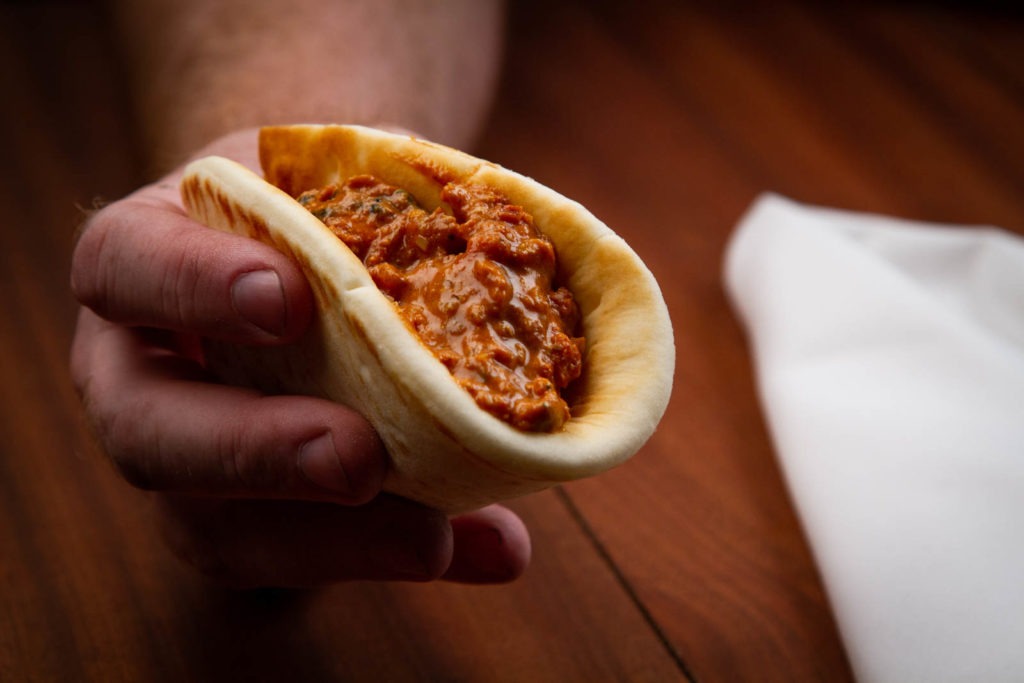
Note that while we are using chicken for this dish, lamb tikka masala (or even shrimp) is every bit as delicious, if not more so!
The Tikkas: tandoor cooking
As I mentioned above, chicken tikka masala is traditionally made from char-broiled chicken, and getting that delicious fire-roasted flavor from grilling is really the way to go. Skewer up your chicken pieces and cook them over a hot grill until they reach 160°F (71°C), turning them occasionally. The charred bits contribute greatly to the flavor of the final dish.
But if you really want to turn things up to 11 and you have a kamado-style cooker, you can go full tandoor! The tandoor of India is a clay vessel with a partially closed top and has a fire built in the bottom of it. The oven reaches temperatures up to 900°F (482°C)—far more intense than your average grill!
Using an egg-style cooker for a tandoor takes some extra time, lots of fuel, and plenty of airflow, but it is loads of fun. We loaded our ceramic cooker with lump charcoal and lit as much of it as we could and used a small blower fan positioned in the intake vent to feed the fire. Leaving the lid open for a few minutes, too, helped to get a raging fire going. Once all the charcoal was burning, we closed the lid to allow the cooker to heat. The heated ceramic walls radiate into the chamber, keeping the temperature up and cooking the chicken from all sides. To be sure, it’s hard to keep the temp above 700°F (371°C) without proper preheating, and a lot of our cooking actually took place at around 550–600°F (288–316°C). We know that because we used a ThermaQ and a Hi-Temp Flexible Ceramic Fiber-Insulated Probe with a temperature range up to 2,200°F (1204°C) to track the temperatures.
Note that if you’re cooking tandoor style, you need skewers that are long enough to extend from the top vent diagonally to the junction of the grill and the wall (ours were 18”, just barely long enough). When you cook the chicken, lower the skewers in through the top hole of your kamado cooker and prop the tip in the gap between the wall and grill. You will also need serious heat resistant gloves to move and turn them! Because we were shooting for temperatures that were higher than the rating for the ChefAlarm or Smoke, we couldn’t probe the meat while it was cooking. Instead, we periodically removed each skewer to check the temperatures with our trusty Thermapen®.
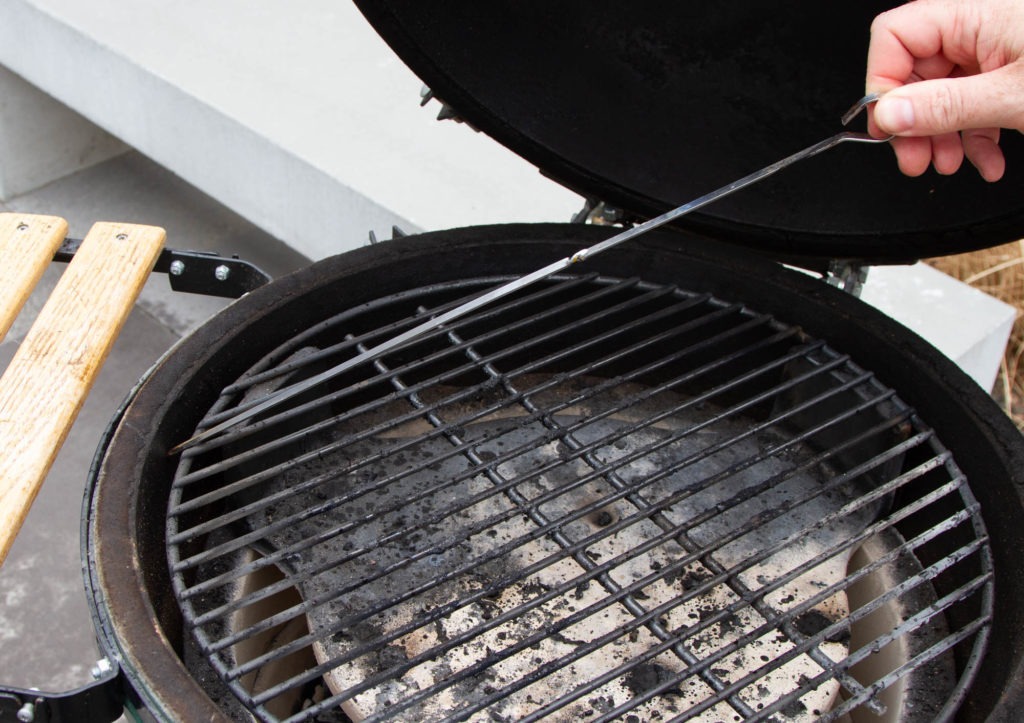
(For those without a grill, you can still make the dish. Just cook you chicken on skewers in a 425°F (218°C) oven.)
The Masala: seasoned sauciness
To make the thick, rich “gravy” for the curry, start with a base of onions and seasonings. Indian food is very particular about how spices are handled, and the particularity pays off with big, bold flavors. In this case, onion is sautéed in butter until browned and then spices and other fresh flavorings are added to the hot pan and cooked to toast them and awaken their aromas. The process only takes a few seconds but is very important. Adding the spices to the liquid later does not result in the same flavor.
Once the spices are toasted, crushed tomatoes are added and the whole dish is simmered to soften the onion completely. Once everything is cooked and partially thickened, cream is added to combat the tartness of the tomatoes and balance the whole dish.
Make the sauce while your chicken marinates so that it’s ready to go as soon as the chicken is cooked. It can be lidded and kept warm while you’re at the grill. Also prepare the rice while the chicken marinates, if you’re serving it. Warm some flatbreads for a complete, delicious meal that will truly impress.
Once you taste this dish, you’ll understand how it became one of the most popular dishes in the world. The charred flavor of the succulent chicken pieces, the tangy orange sauce—yum. And though the ingredients list looks long, assembling the recipe is really only as difficult as making your own dry-rub for some ribs. Plus, the fun of cooking at 600–900°F (316–482°C) is its own reward!
With tools like the Thermapen® and the ThermaQ, you can cook with the assurance that though your cooking temperatures are high, your chicken will not be overcooked. Give it a try this weekend!
Print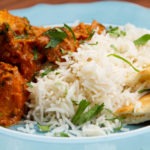
Chicken Tikka Masala Recipe
Description
Based on the recipe found in The Complete America’s Test Kitchen TV Show Cookbook
Ingredients
For the chicken tikkas
- ½ tsp salt
- ½ tsp ground cumin
- ½ tsp ground coriander
- ½ tsp cayenne pepper
- ½ tsp paprika
- ½ tsp turmeric
- ½ tsp garam masala
- 2 lb. boneless skinless chicken breasts, cut into 1” cubes
- 1 C whole milk plain yogurt (a thick variety like Greek yogurt is best)
- 1 Tbsp minced or grated fresh ginger
- 2 Tbsp finely chopped fresh cilantro stems
- 2 medium garlic cloves, minced
For the masala sauce
- 3 Tbsp butter or vegetable oil
- 1 medium onion, minced
- 1 Tbsp garam masala
- 1 Tbsp tomato paste
- 2 medium garlic cloves, minced
- 2 tsp minced or freshly grated ginger
- 1 serrano chile, minced (remove seeds and ribs for less heat)
- 1 28-oz can of crushed plain tomatoes
- 2 tsp sugar
- ½ tsp salt
- 2/3 C cream
- ¼ C fresh chopped cilantro, plus more for garnish
Flatbread and basmati rice for serving
Instructions
Instructions
If you’re using a kamado-style cooker as a tandoor, preheat it at least a half hour before preparing the food. Run it with vents wide open for maximum oxygen flow and heat production.
Marinate the chicken
-
- Mince the aromatics: cilantro stems, ginger, and garlic.

-
- Mix the yogurt with the spices, salt, ginger, and garlic together in a large bowl.

-
- Add the chicken pieces and stir gently to fully coat the chicken.
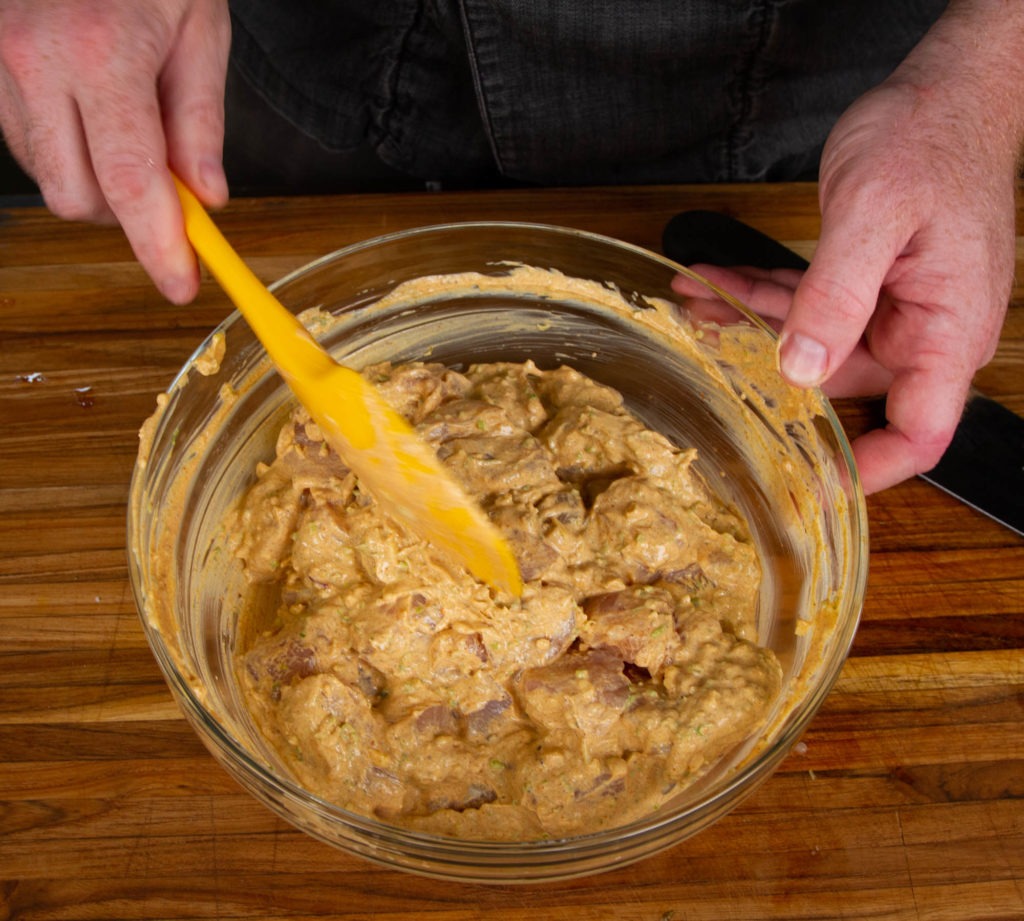
-
- Cover and place in the refrigerator for 30 minutes to 1 hour.
Prepare the sauce
-
- Heat the butter over medium heat in a heavy-bottomed saucepan or Dutch oven.
-
- Add the onion to the butter and cook, stirring frequently, until the onion begins to brown, about 10 minutes.
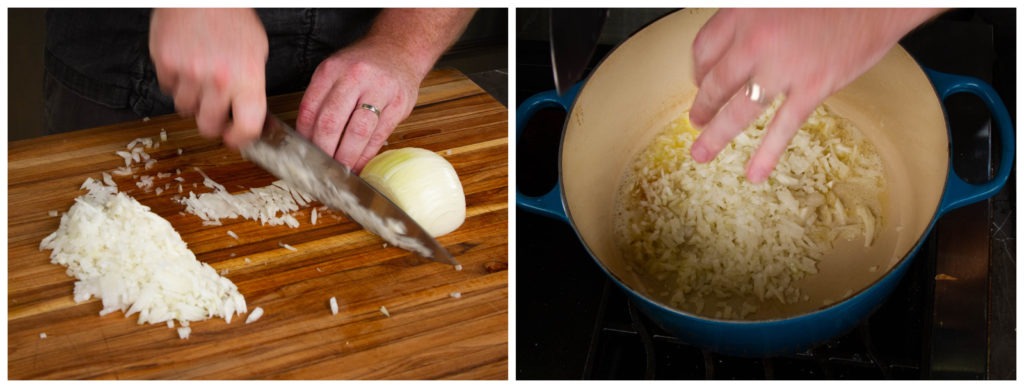
-
- Add the garam masala, tomato paste, ginger, serrano, and garlic and cook, stirring, until very fragrant, about 45—60 seconds.

-
- Add the crushed tomatoes and stir everything to combine. Be sure to scrape up and nice brown bits from the bottom of the pan.
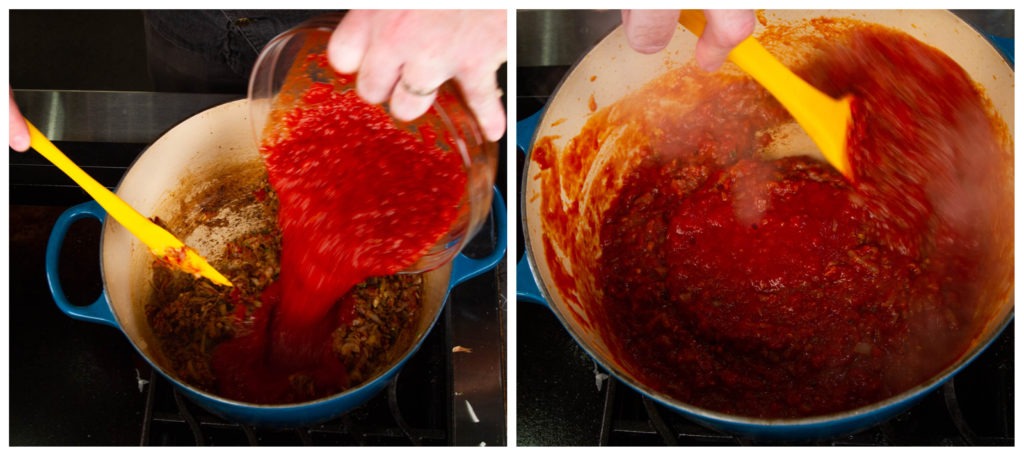
-
- Reduce the heat to a low simmer and cover the pot. Simmer for about 15 minutes, stirring from time to time. Now is a good time to prepare the rice. If you’re not doing a tandoor-style cook, preheat your grill or oven to 425°F (218°C).
-
- Once the sauce has simmered, add the cream and stir to combine. Return to a simmer, kill the heat and cover the pot until the chicken is done cooking.

Cook the chicken
-
- Thread all the chicken pieces onto your skewers.

-
- If using the kamado tandoor as we did, lower the skewers in through the top vent hole of the cooker, angling the tip of the skewers so that they wedge in the gap between the grill and the wall of the cooker. You can put a few in at a time if you’re careful with the angles.

-
- Turn the skewers every 5 or 6 minutes.
-
- Cook the chicken until it’s internal temperature reaches 160°F (71°C)—at this temperature, the chicken is safe to eat after 16.9 seconds. We found that at the ~600°F (316°C) temperature we were able to maintain it took about 12-15 minutes to cook.
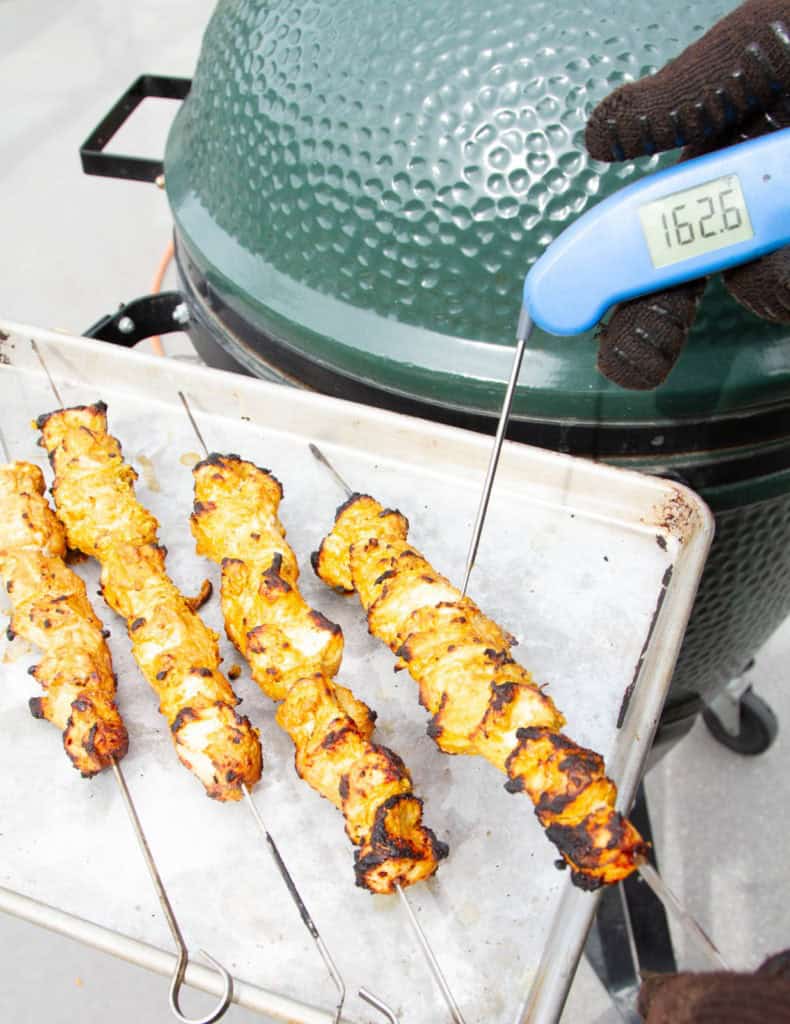
-
- Check the temperature of each skewer in a few places with your Thermapen®.
-
- As each skewer reaches the pull temp, remove it from the cooker.
-
- When all the skewers are done cooking, remove all the meat from the skewers to the masala-sauce pot. Add the chopped cilantro and stir to combine.

-
- Serve over fragrant basmati rice with warmed flatbreads and garnish everything with more cilantro.
Shop now for products used in this post:


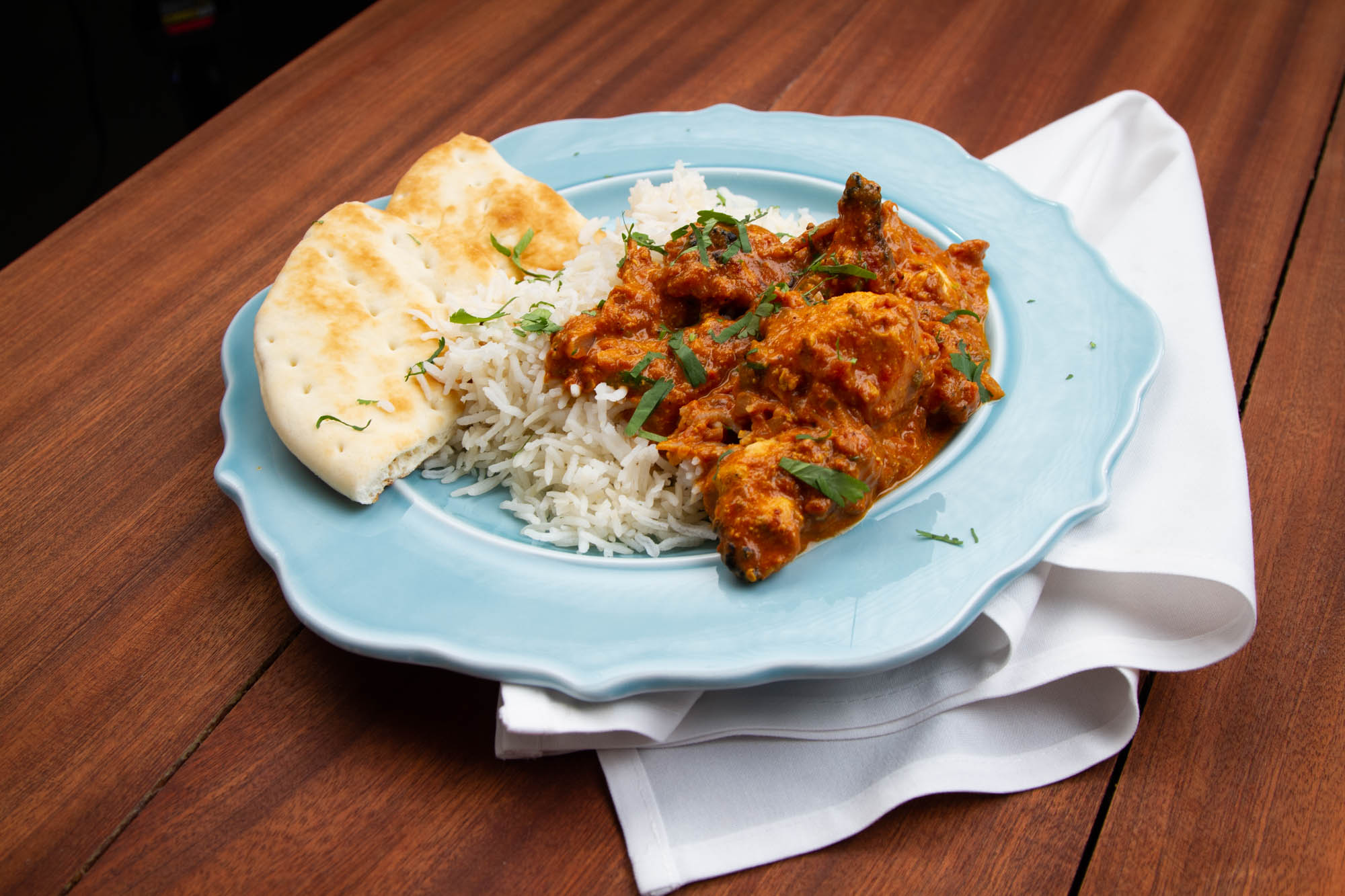
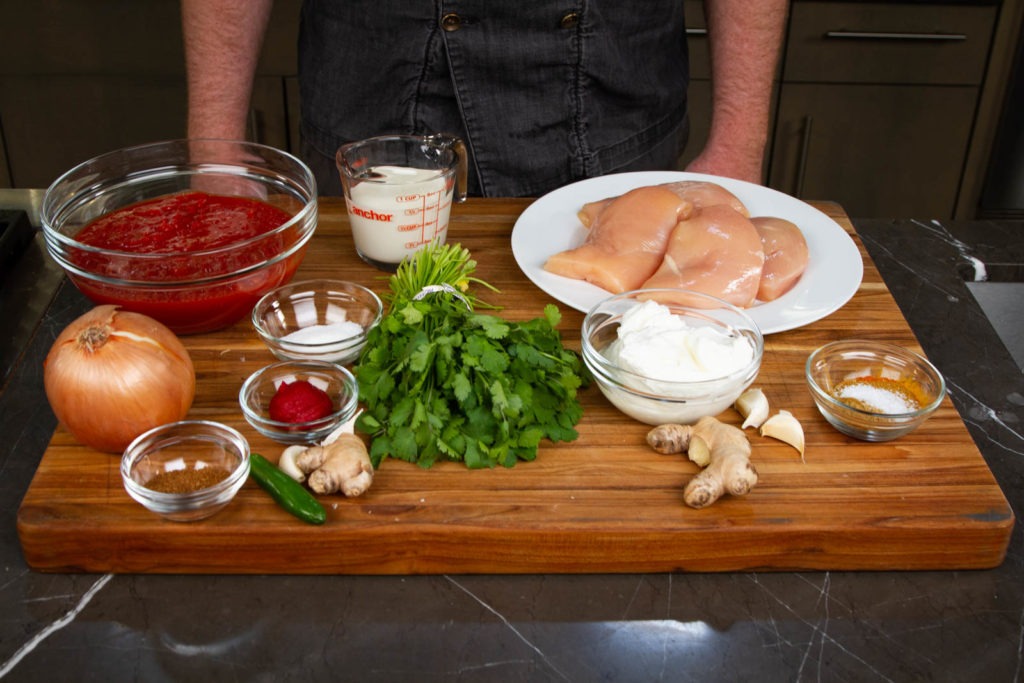
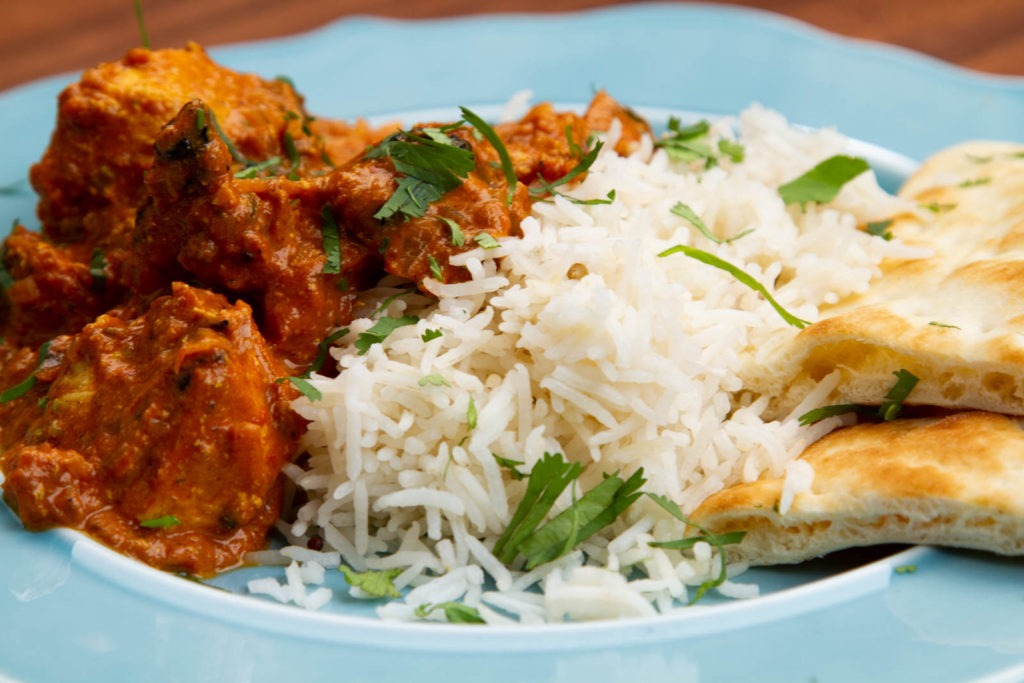

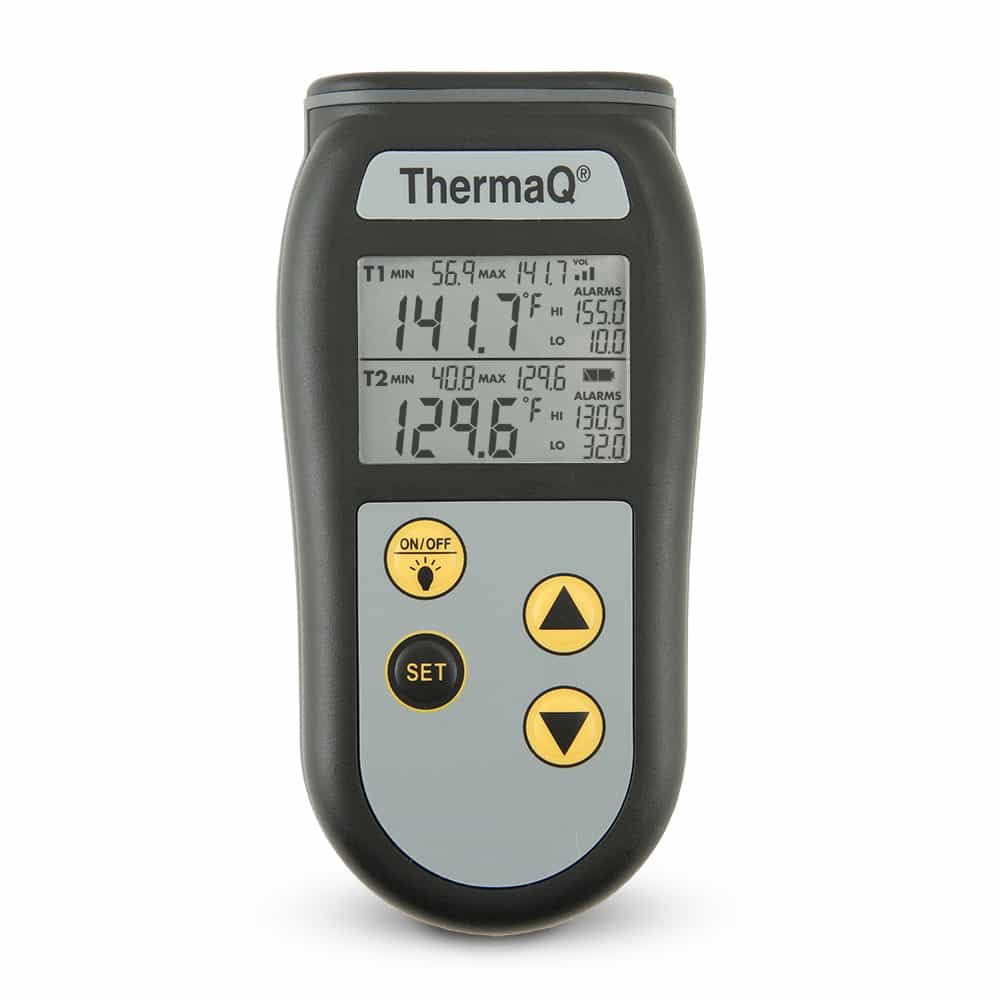
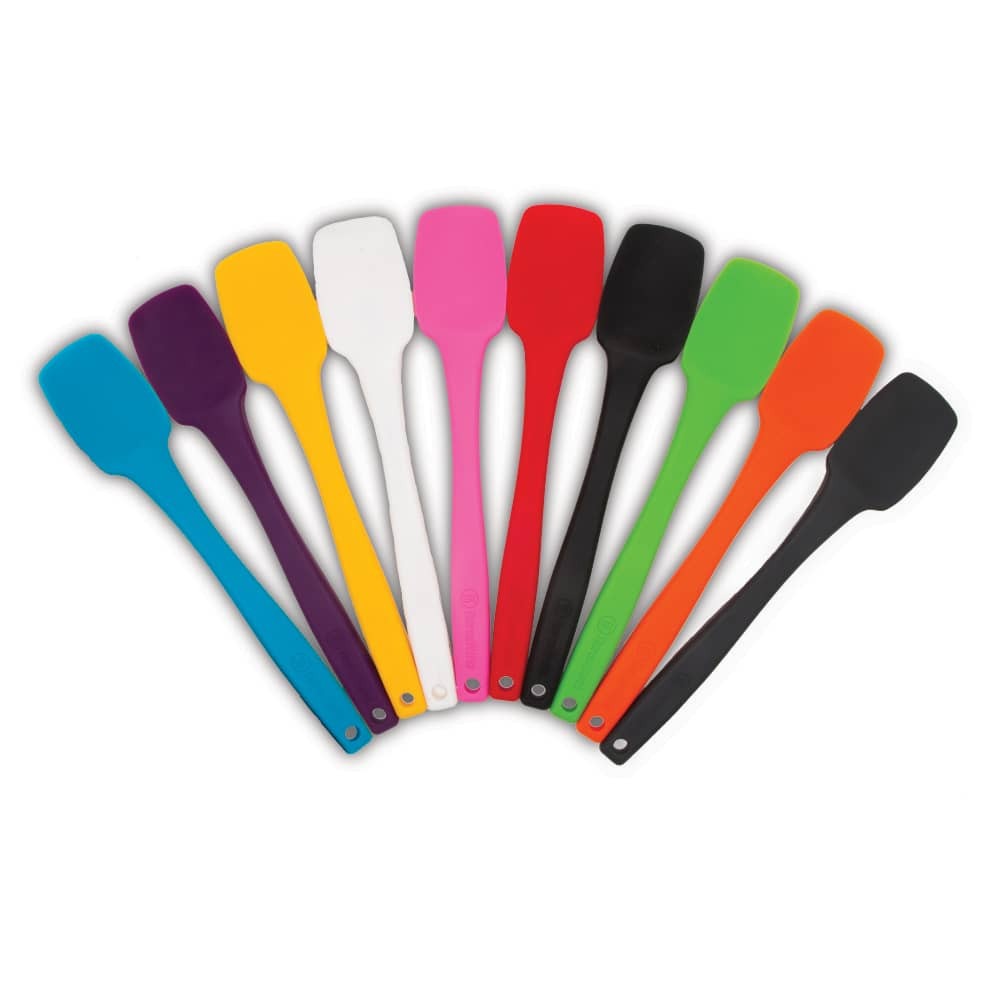
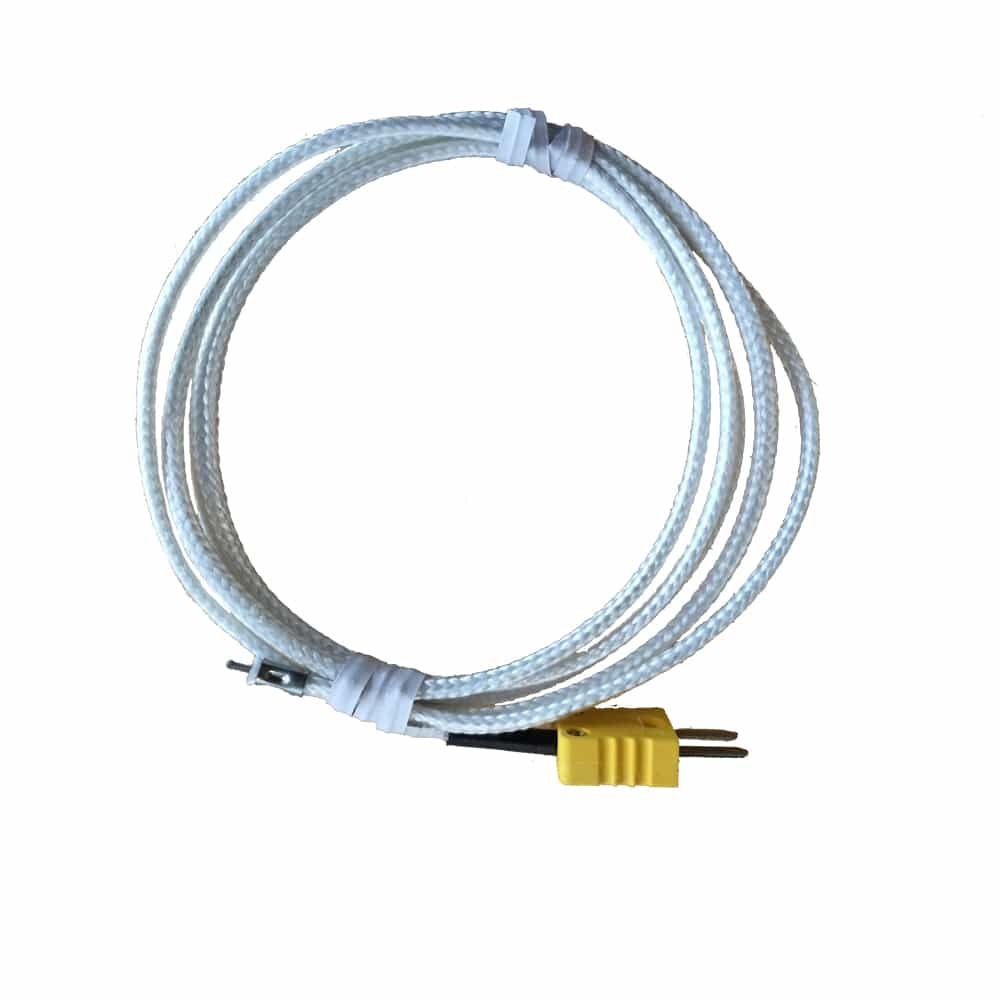
A properly made tikka masala combines fire-roasted chunks of meat in a tasty curry sauce. You had me at curry. Am I missing something? I found no curry in the recipe listed. I am still intrigued by the recipe, but still…
Duane,
Excellent question! I’m glad you asked this because I’m sure there are plenty of other people thinking the same thing.
So, here’s the thing: curry has nothing to do with curry powder! Curry is a style of dish that includes a richly spiced, often thickened sauce with either meats or vegetables that are either cooked in the sauce or cooked and added to it later. A very good analog to it is Mexican Mole, of which there are many styles—mole verde, mole pipian, mole amarillo, etc.
Curry powder is, much like tikka masala, an English invention. Created by spice traders to bring the flavors of Indian cuisine to England, it contains many of the spices used in curries. But there are, in essence, no curries in India that use curry powder! The closest thing is the garam masala which is a blend of warm spices, usually including cinnamon, clove, cumin, coriander, cardamom, black pepper, and sometimes hot chilies. If there were a “curry powder” that was actually used in Indian cuisine, that’d be the one!
Interestingly enough, Japanese curry (kare as they call it) is based on something very much like what we know as curry powder. I’m not 100% positive on this, but I am pretty sure it was developed in Japan using the curry blends introduced by English traders.
So, great question and I wish you happy cooking!
This recipe looks great and I plan on preparing Chicken Tikka Masala as soon as I can locate “garam masala”. I’ll try Amazon first. I love your recipes and I love your products of which I own, and have gifted to others, many.
However, a recipe that is 12 pages long with enough color pictures to burn through an entire tri-color print cartridge is NOT “printer friendly”. I cut-and-pasted the lists of ingredients and placed that one page into my recipe notebook.
Richard,
I’m glad you like how the recipe looks. I can assure you it is delicious! Garam masala is available at most well stocked grocery stores in the spice aisle, and recipes to make it yourself are available online. If you have an Indian market nearby, they’ll have it for sure!
We’re looking for a solution to the sprinting problem, and appreciate you input on the matter. I ope to have it resolved soon.
Garam masala, like curry powder, is not a single ingredient, and no two brands of garam masala are the same. It is a blend of spices and is something you can easily make yourself. I use garam masala I made following the recipe on the Hot Thai Kitchen website. It is included with Pailin’s recipe for Butter Chicken, a dish similar to the recipe here for Chicken Tikka Masala.
A reason NOT to make garam masala is you do not have or cannot get some of the base spices, or you simply do not have any other need for the base spices.
As an interesting side note, people passionate about Indian and Pakistani cooking will often guard their family’s garam masala spice mix recipe the same way a Grill Master guards their winning BBQ sauce recipe.
Hi,
Love the tikaka masala chicken. I ordered often when I go to the Indian restaurant.
On the recipe you addressed the cooking steps for the Komodo grill, however, the steps for the oven cooking was not.
Could you please add it?
Thanks,
Sa
Simply roast the marinated skewers in a 450°F oven, or, even better, put them under your oven’s broiler, keeping a close watch on them and temping them frequently.
…”nor is the combination of sauerkraut and bratwurst eaten by actual Germans.”
I am a German. (living in the US). The last couple of years we invited our Friends to our anual pre Christmass party with bratwurst, sauerkraut and glühwein (mulled wine). We took the idea of bratwurst and sauerkraut from books of the great (German) children book author Otfried Preussler.
By the way: My smoke thermometer helps a lot, to keep the glühwein at the right temperature during party night.
Martin,
Grüß! I probably spoke to strongly. When I lived in Sachsen for a couple of years, no one I talked to ate Bratwurst mit Sauerkraut. Perhaps it is a regional difference? Either way, the Smoke for the Glühwein ist total genial.
I agree with the person who suggested having a print version. It is very difficult scrolling up and down looking at each ingredient then when to add them to the marinate or sauce.
You never mentioned when to add the cilantro stems. I took the chance and added to the yogurt marinate. Also, as a person of East Indian decent there are curry powders that exist and used. As each region or place you find throughout the world it is an experience to the taste buds when you find how each region provide these mixtures as a convenience to those home cooks. I cook the chicken in the oven, broil for color. Very tasty
I have updated the recipe format so that there is now a Print button on the recipe. Enjoy!